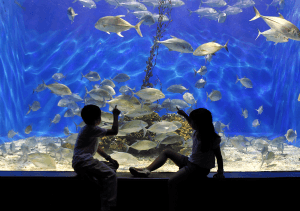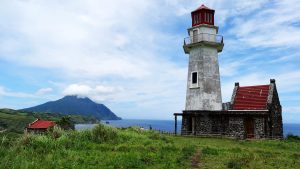Back in 2010, the New York Times foreseen Boracay as Asia’s next tourism hotspot. In recent years it leaped from a low-key tropical backwater to Southeast Asia’s go-to vacation destination. Long stretches of powdery white sand, kite-surfing, and dive friendly reefs teeming with marine life became the crown-jewel of the Philippine Islands.
Yearly millions of tourists flock the place and the race for tourist dollars fuelled development. Windows of opportunity presented itself bringing job and money but strained Bora’s water and garbage disposal system.
A video of black water spurting from a sewerage pipe with a kite surfer in the background drew the ire of President Duterte. Insufficient sewage system turned a beautiful island into a cesspool, tourists swim in water polluted by feces. Using his more colorful words he said, “You go into the water, it’s smelly. Smell of what? Sh*t. Because it all comes out in Boracay.”
He told Environment Secretary Roy Cimatu: “I’ll give you six months. Clean the goddamn thing.”
Reasons for closing Bora Island
In February, President Duterte lashed out at those responsible for the mismanagement of the island turning it into a “cesspool.” “As long as there is shit coming out of those pipes draining to the sea, I will never give you the time of the day (to return)” to the island, said President Duterte.
According to the Philippine News Agency (PNA), 716 out of 834 residential and business properties have no discharge permit and getting rid of wastewater directly into the sea.
Forest land is home to 948 illegal structures which the government will dismantle. There are 109 establishments that violate the 30-meter easement rule, the separation from the coastline to the construction site. Owners must demolish these or the government will.
There were 50 hotels and restaurants that were handed notices in February but they failed to adhere to the country’s water treatment laws.
Effects of the shutdown
The 6-month closure of Boracay Island will have a minimal effect on the Philippine economy but the livelihood in the country’s top tourist spot will be affected according to NEDA.
“Basically the overall picture we see is, even if say the ban extends to up to six months, at the macro level, it’s not going to be significant. The most is something like 0.1 percent of GDP (gross domestic product),” NEDA National Policy and Planning Staff Director Reynaldo Cancio said in a media briefing.
Cancio said concerned agencies are finding measures to alleviate the effect of the closure of Boracay Island, including promoting alternative tourist destinations, such as Palawan and Davao. “Something that is being discussed with DOT (Department of Tourism) is how we can accommodate them (tourists) in terms of the capacity; and of course the infrastructure,” he said.
Based on information gathered from Boracay Foundation there will be 17,000 employees affected by the closure of business and 19,000 workers from the informal sector that includes beach masseuses, tattoo artists, and vendors, a total of 36,000 displaced workers.
Those that will be affected will be offered work by the government to rehabilitate Boracay Island and will be paid the minimum wage.
Philippine Airline and Cebu Pacific will scale down flight services to and from Caticlan and Kalibo following the 6-month shutdown of Boracay Island.
The Department of Tourism projected 18 ocean liners carrying over 50,000 passengers to visit the island in 2018 which will not come to fruition. It’s a pity since this will stymie the forecasted increase in tourist arrivals. In 2017, Boracay registered a 14.3 percent increase from 1.94 million in 2016 to 2.2 million.
What will happen during the shutdown?
On or before April 26, 2018, President Duterte will declare a state of calamity to have quicker access to funds for the clean-up, rehabilitation of Boracay Island.
The hotels and restaurant will not be closed but tourist will not be allowed to step foot on Boracay during the rehabilitation period. The government will find a way to help tourists who had booked tickets and room accommodations covered by the shutdown period.
The focus of the shutdown is to fix the water sewerage system and garbage disposal system.
New water treatment facilities will be erected along with the rehabilitation of the 3 sewerage lines.
Each establishment that has violated environmental rules and regulations will be monitored. The appropriate measures will be sanctioned including demolition of illegal structures. Violators may face cease and desist orders and filed with a criminal case. Local government officials complicit in the violations of the private sector will be filed with either administrative or criminal cases.
Conclusion:
It’s a good thing that President Duterte saw the state-of-condition of Boracay Island and did something about it. A 6-month shutdown is a bitter pill to swallow but it’s nothing compared to the long-term gains from this action. Mabuhay, see you in Bora after 6 months.
Sources and citations:
https://ptvnews.ph/boracay-closures-economic-impact-likely-minimal-neda/
https://www.nytimes.com/2018/04/04/world/asia/boracay-philippines-tourists-closed.html
https://edition.cnn.com/2018/04/04/asia/philippines-duterte-boracay-shutdown-intl/index.html




